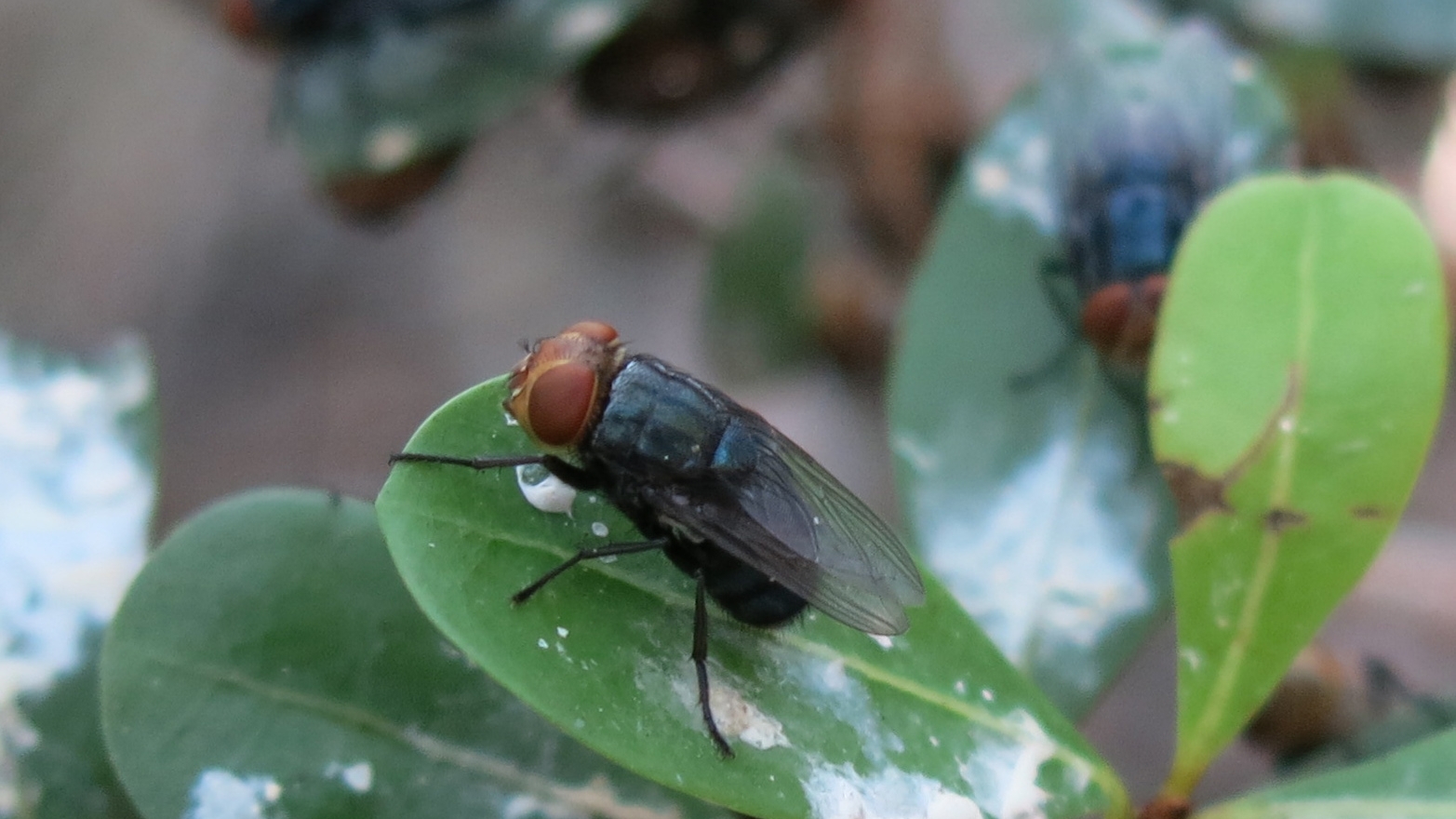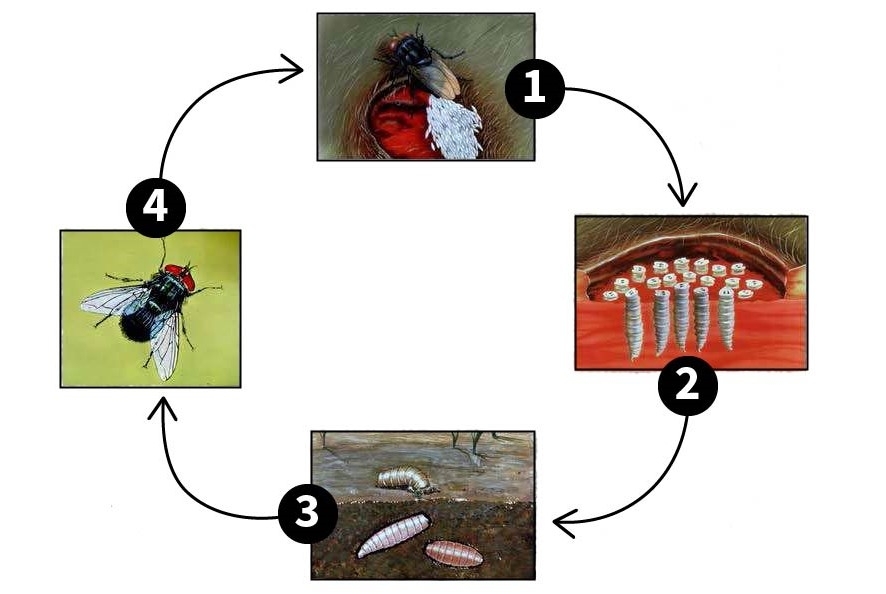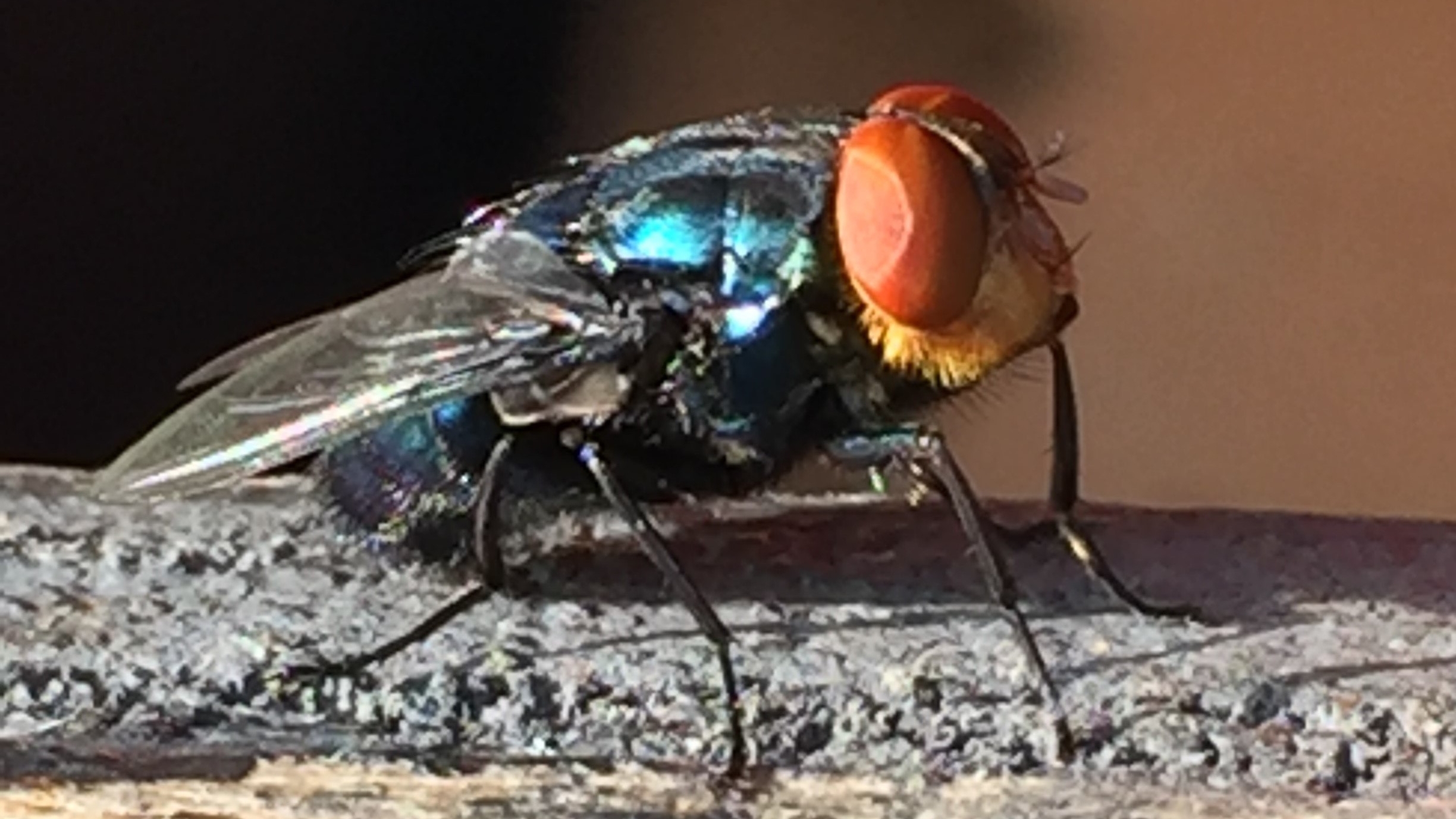New World Screwworm
NWS Outbreak in Central America and Mexico
APHIS is partnering with other USDA agencies, the U.S. Department of State, the Food and Agriculture Organization of the United Nations, and affected countries to respond to an outbreak of NWS in Central America and Mexico.

New World screwworm (NWS, Cochliomyia hominivorax) is a devastating pest. When NWS fly larvae (maggots) burrow into the flesh of a living animal, they cause serious, often deadly damage to the animal. NWS can infest livestock, pets, wildlife, occasionally birds, and in rare cases, people.
NWS is endemic in Cuba, Haiti, the Dominican Republic, and countries in South America. For decades, the United States and Panama have collaborated through the Commission for the Eradication and Prevention of Screwworm (COPEG) to prevent the pest's northward movement. We use a biological control technique (sterilized insects) to eradicate NWS fly populations. This approach eradicated NWS from the United States in 1966 and eliminated a small outbreak from the Florida Keys in 2017.
Keeping NWS out of the United States is crucial to protect our livestock industry, economy, and food supply chain.
This report summarizes historical economic impact estimates of NWS in the United States, costs associated with NWS infestation, and the potential economic impact of NWS in 2024.
The name screwworm refers to the maggots' feeding behavior as they burrow (screw) into the wound, feeding as they go like a screw being driven into wood. Maggots cause extensive damage by tearing at the hosts’ tissue with sharp mouth hooks. The wound can become larger and deepen as more maggots hatch and feed on living tissue. As a result, NWS can cause serious, often deadly damage to the animal.
Adult screwworm flies are about the size of a common housefly (or slightly larger). They have orange eyes, a metallic blue or green body, and three dark stripes along their backs.
Report mammals and birds with the following signs:
- Irritated behavior
- Head shaking
- The smell of decay
- Presence of fly larvae (maggots) in wounds
Learn More
The best way to keep screwworm out of this country is to prevent introductions. NWS can infest mammals, including people, and birds. Here are steps you can take to avoid infestation:
- Be alert for NWS symptoms in pets and livestock.
- Ensure that pets traveling internationally are inspected for screwworm.
- Check your vehicle for screwworm flies if you are in an NWS-infested area.
If you think you have found a screwworm, report it immediately to your State animal health official and APHIS office. This will allow APHIS and partner agencies to respond quickly and remove the screwworms before a population becomes established.
Eradicating NWS is only possible through sterile insect technique (237.54 KB). With this method, sterile male flies are released into an area where a known population has become established. The sterile male flies mate with wild female NWS flies, which then lay unfertilized eggs. Because female NWS flies mate just once in their lifespan, the NWS population progressively reduces and ultimately dies out.
Animals infested with NWS should be treated according to their veterinarian's recommendations.
Currently, there are no animal drugs approved by FDA for the treatment or prevention of New World Screwworm (NWS) myiasis in animals. FDA provides information to support veterinarians with identifying FDA-approved animal drugs labeled for indications other than NWS myiasis that scientific literature indicates may be effective to prevent or treat NWS myiasis.
There are pesticides to potentially use against NWS. View list.
People who suspect they are infested with NWS should seek immediate medical treatment following the Centers for Disease Control and Prevention (CDC) guidelines. For information on how screwworms affect people or to report human disease, visit CDC at About New World Screwworm Myiasis and Clinical Overview of New World Screwworm Myiasis.
NWS Life Cycle

- The adult screwworm fly is attracted to the smell of an open wound and lays her eggs on the edges of it.
- Within a few hours, the eggs hatch into larvae, which burrow into the wound to feed. This worsens the wound and attracts more flies, which lay more eggs.
- The larvae feed for about 1 week and then fall off and burrow into the ground to pupate.
- After at least 7 days, an adult fly emerges.
NWS Informational Products
| Product | Type | Other Versions |
|---|---|---|
| New World Screwworm: What You Need To Know (480.91 KB) | Brochure | Fillable PDF (high-res) (4.03 MB) Fillable PDF (press-ready) (4.1 MB) |
| Gusano barrenador del Nuevo Mundo: Lo que necesita saber (423.97 KB) | Brochure | Fillable PDF (high-res) (4.07 MB) Fillable PDF (press-ready) (4.66 MB) |
| Pest Alert: New World Screwworm (212.06 KB) | Factsheet | Spanish (221.68 KB) |
| Screwworm: An International Threat to Human and Animal Health (958.86 KB) | Poster | Not applicable |
| New World Screwworm (874.64 KB) | Pest ID card | Not applicable |
| New World Screwworm: A Threat to Wildlife (Information for Hunters) (559.97 KB) | Factsheet | Spanish (1.04 MB) |
Report Signs of Animal Disease
Producers or owners who suspect an animal disease should contact their veterinarian to evaluate the animal or herd. Find an accredited veterinarian.
Animal health professionals (veterinarians; diagnostic laboratories; public health, zoo, or wildlife personnel; and others) report diagnosed or suspected cases of nationally listed reportable animal diseases to APHIS Area Veterinarians in Charge and to the State animal health official as applicable under State reporting regulations.
Controlling New World Screwworm
Browse our informational materials on the history of NWS eradication in the United States.
| Title | Type | Description |
|---|---|---|
| NWS Historical Economic Impact | Ready Reference Guide | Summarizes historical economic impact estimates of NWS in the United States, costs associated with NWS infestation, and the potential economic impact of NWS in 2024 |
| NWS Maps and Timelines (776.15 KB) | Ready Reference Guide | Overview of NWS eradication programs by start date, duration, and more, with quick-reference maps and visual timelines |
| New World Screwworm | Story Map | Visual narrative that summarizes basics about NWS, eradication, past outbreaks, and more |
| NWS Investigations in the United States From 2016–2017 | Video | Time-lapse map of U.S. investigations for NWS |
| NWS Investigations in Florida From 2016–2017 | Video | Time-lapse map that gives an overview of the Florida NWS response |
| 2016 Investigation into Introduction of NWS into Florida Keys | Report | Topics covered include background on the 2016 investigation, epidemiology of the outbreak, and known pathways for introduction |
| APHIS Veterinary Services Response to the 2016–2017 Outbreak of NWS in Florida (2.9 MB) | Report | Overview of the 2016–2017 outbreak of NWS in Florida, focusing on the development of the outbreak and the structure and activities of APHIS' response |
| Cooperative Screwworm Eradication Program Environmental Assessment, August 2017 (572.14 KB) | Report | Environmental Assessment for Screwworm activities |


